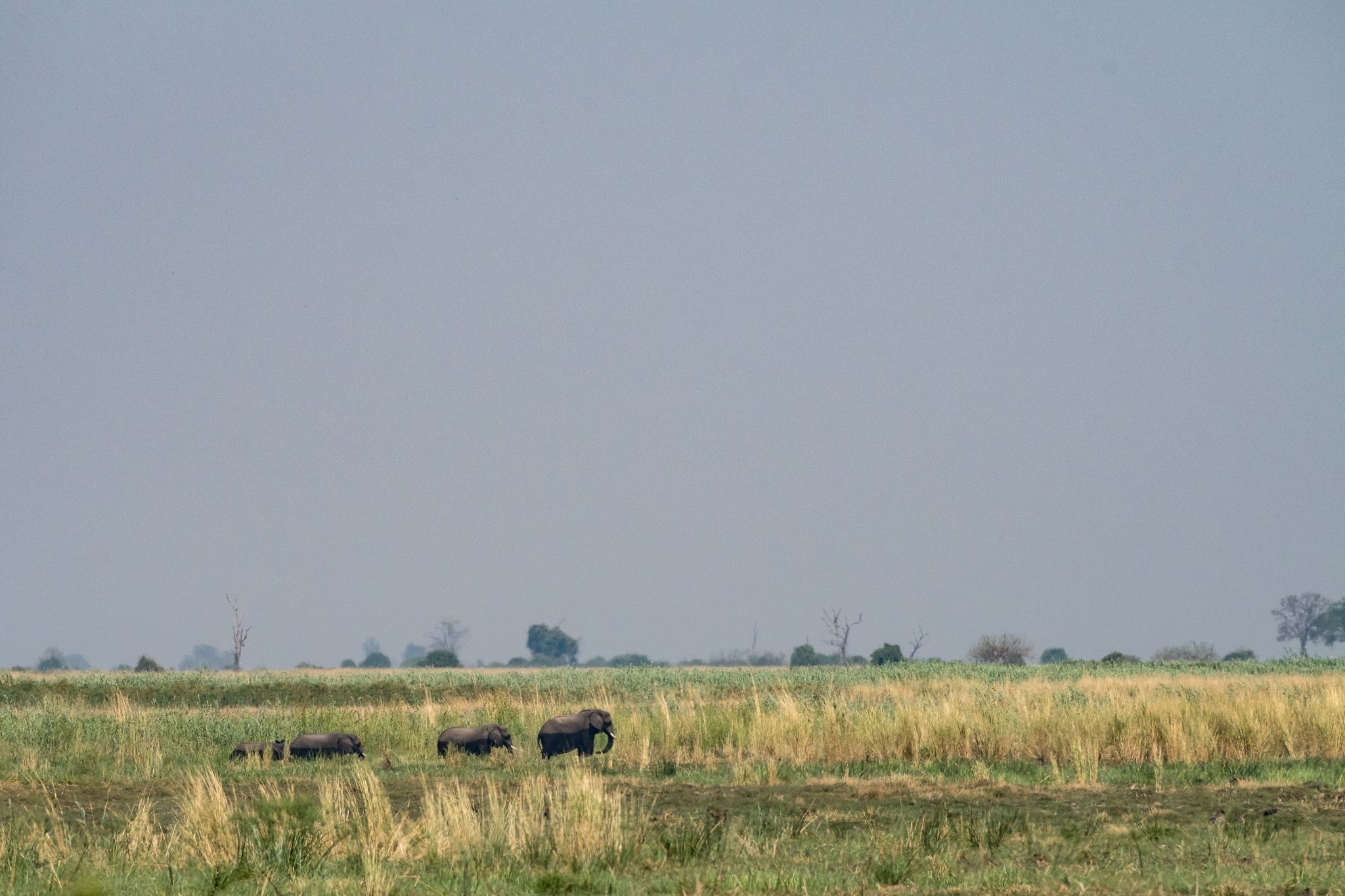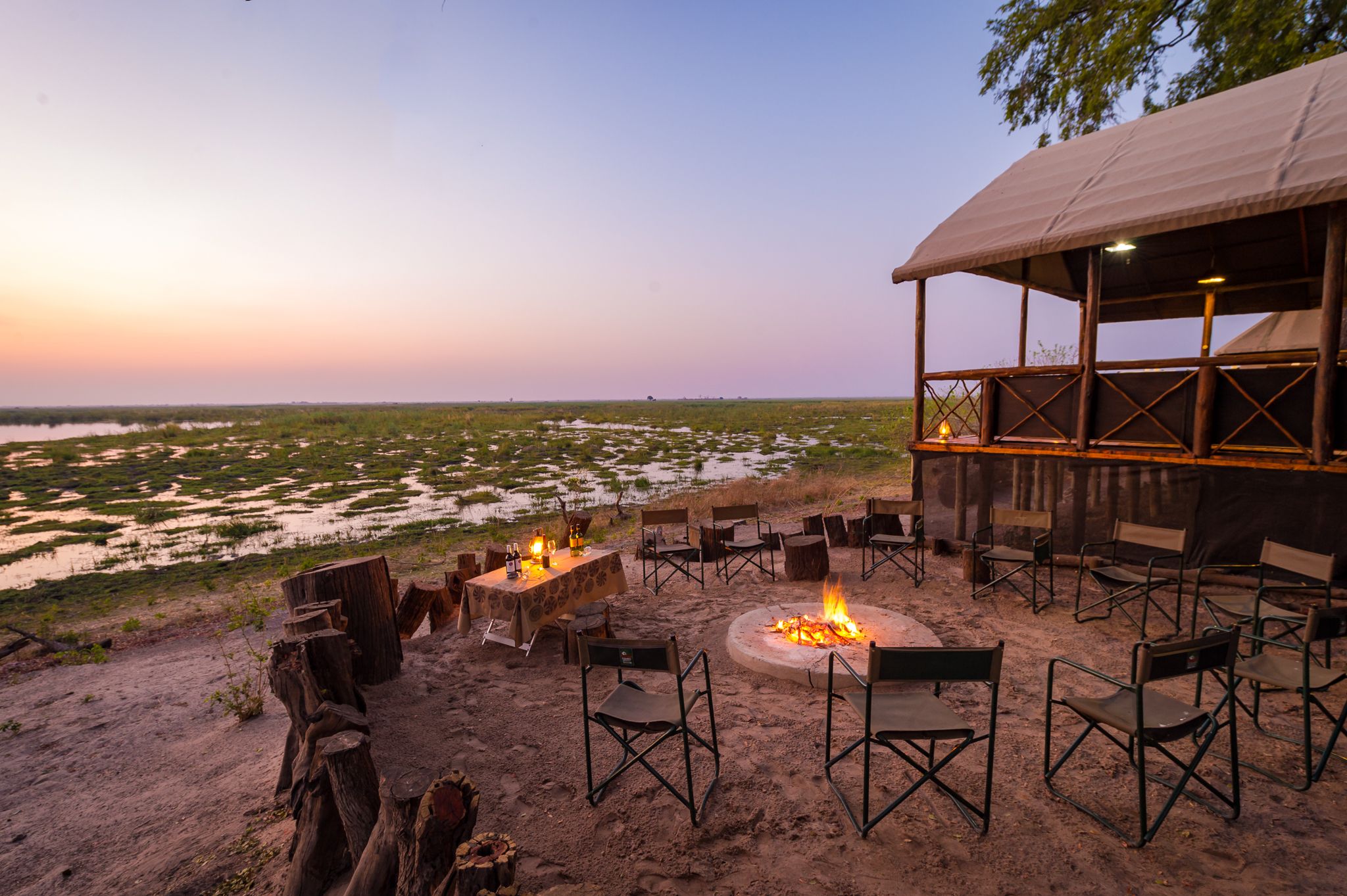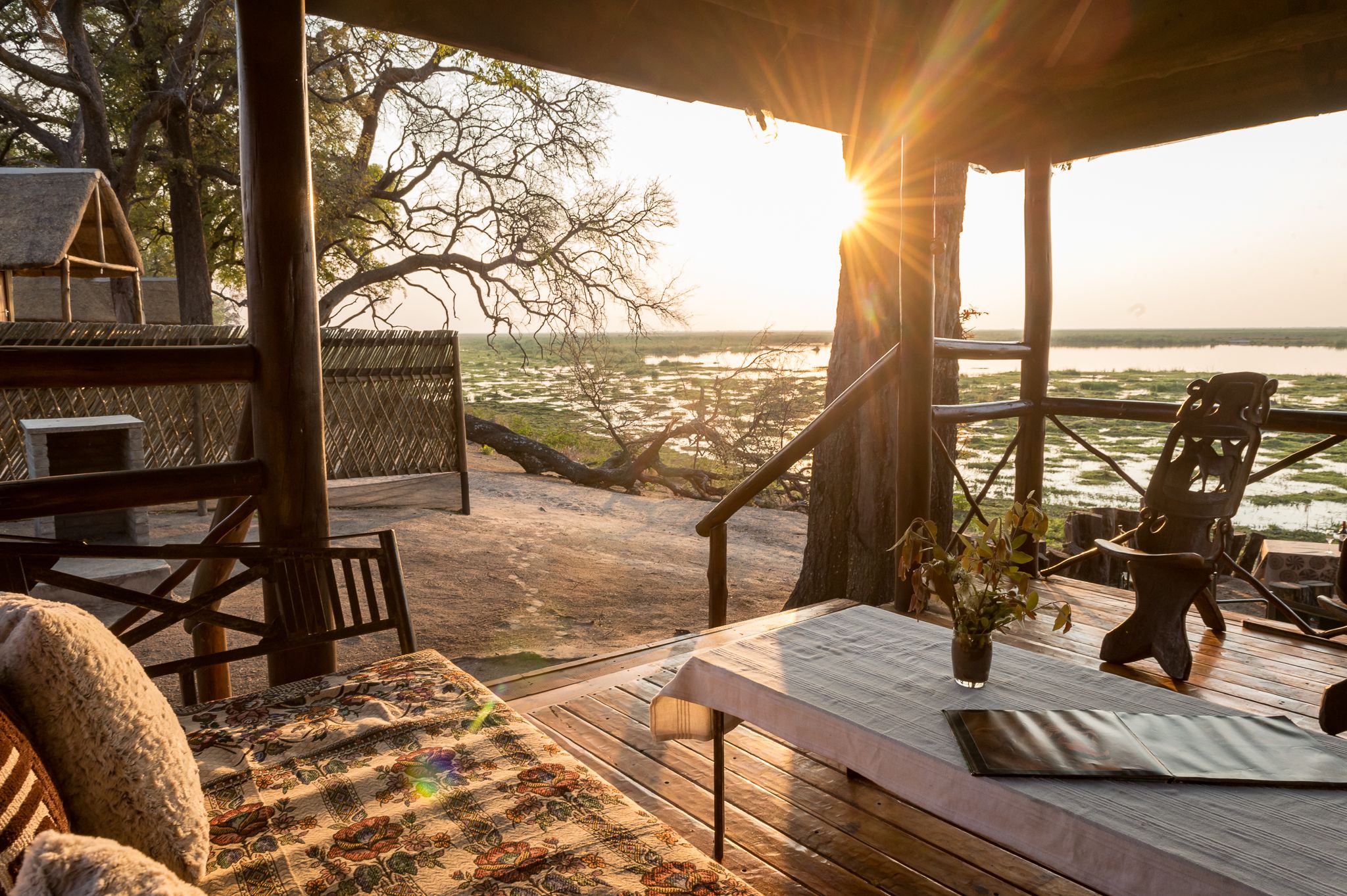ExperienceSafari in unique ways
Morning game drive: Mornings at Camp Linyanti begin with an early wake up call and optional tea and coffee before heading out on game drive. The Linyanti rivers and lagoons, floodplains and marshlands creates a wetland paradise for big game.
Evening game drive: Guests will embark on their second game drive in the late afternoon. There will be a drinks stop during evening game drive when guests can enjoy a refreshment (pre-ordered and packed by the guide) and spend a quiet moment in the Linyanti exploring the riiverine forests and lush terrain.
UniqueWildlife Experiences

DetailsUseful Info
When the surrounding areas dry up after the rains have ceased and the winter months take over, the Linyanti comes to life. The rains dry up after April, and by June, July and August, the temperatures have dropped and the water that remains is in the permanent channels, but the levels are unpredictable. Elephants gather in numbers that are estimated as some of the highest in the world, and buffaloes herd towards the lagoons en masse.
The rainy season arrives with the summer months, and the Linyanti region is at its wettest from December to April. Before the rains in October, temperatures reach their highest (over 40 degrees Celsius).
For wonderful birding and a beautifully green landscape, summer is the best time to visit the Linyanti. For higher density game viewing and easier spotting of animals, visit during winter.
What to pack into your safari suitcase depends on what time of year you are set to travel.
Botswana can get hot in October just before the rains start, when it reaches 40 degrees Celsius. The African sun is scorching, so we recommend bringing sun block and hats. Light, cool clothing is also necessary at this time of year, as is waterproof rain gear.
During the cooler dry months, it’s recommended that guests wrap up for game drives with jackets and scarfs. Daytime temperatures are moderate throughout winter, so short sleeves are still a must pack item. Closed shoes are required for walking around camp.
Birding is great throughout the year, but particularly in summer when migrant species arrive. Binoculars are a good idea, as is a camera. This is a malaria area and mosquitoes are common in the hot, rainy months, so we recommend anti-malaria preparation
Expect to be bowled over with a sense of wild Africa. This camp is not located in the high tourist areas and guests won'tencountera number of other holiday-makers.
Do not expect a luxurious lodge or intrusive opulence, rather a charmingly rustic and comfortable camp that blends into the naturally beautiful environment. The wooden structures and heightened perspectives make the most of the view and the camp's prime position.
You can expect personalised, private safaris that focus on individual preferences, as there are never more than 10 guests at camp and no other lodges. Expect to take advantage of terrestrial and water-based game-viewing.
Camp Linyanti offers the essence of a Botswana safari holiday with an eco-friendly ethos, solar power and lightly built constructions without compromising on comfort.
This is a water-filled wilderness and Camp Linyanti focuses on the sheer beauty of this game-rich area.
What You’ll SeeWildlife
The Linyanti is famously known for its wild dog and lion population. A few years ago, before the Savuti Channel began to flow again, the Linyanti and the Savuti were home to lions that were known to take down elephants.
Today, it is more seldomly seen, but the lions still roam the territory in high numbers.
Leopard, wild dog, and both brown and spotted hyena compete with lions for their prey. Cheetah - also endangered - is a smaller, yet superbly specialised predator, and a real treat to see.
The serval, and bat-eared fox fall into the small carnivore category at Camp Linyanti, and both can be seen on game drive.
The Linyanti region is recognised as one of the best game viewing locations in Botswana because of its marshlands that attract a variety of both terrestrial and aquatic animals.
Most famous is the Linyanti's elephant population. These truly special mammals come together in large herds, communicating in low frequency stomach grumbles, and ambling slowly through the riverine forests with calves in tow. Some of Africa's largest mammals reside in the Linyanti swampland, including masses of buffalo and hippo. Rare antelope species like puku, sable and roan dwell in the woodlands and come out of hiding to drink, while red lechwe and sitatunga love the water.
One of the greatest wildlife spectacles is the migration of thousands of zebra from the Savuti in the south to the Linyanti in the north. After the summer rains (at which time they give birth to their young), the zebra migrateen masse to the permanent waters of the Linyanti.
All year round the birdlife in the Linyanti is worth celebrating. During summer the trees burst into life with the colourful migration species that are drawn to the area for the warm weather and the abundance of water.
Bird lovers will delight in the variety of water birds that are present all year round, as well as the owl population. Special in the area is the beautiful narinatrogan.
Some of the species of birds one can expect to find here are as follows: In the drier areas, racket-tailed roller, Bradfield’s hornbill, white-breasted cuckoo-shrike, Bennett’s woodpecker, swallow-tailed bee-eater and Arnott’s chat. The common water-loving birds that are often found in the Okavango Delta include the pelican, Hartlaub’s babbler, wattled crane, slaty egret, African skimmer, and Allen’s gallinule.
Some of the larger species of birds that fly and nest in the area include the world's heaviest flying bird, kori bustard, Verreaux’s giant eagle-owland the African scops-owl, and the ostrich.
Downloads
Find helpful information about rates, when to travel, wildlife you can expect to see and details about the accommodation.




























